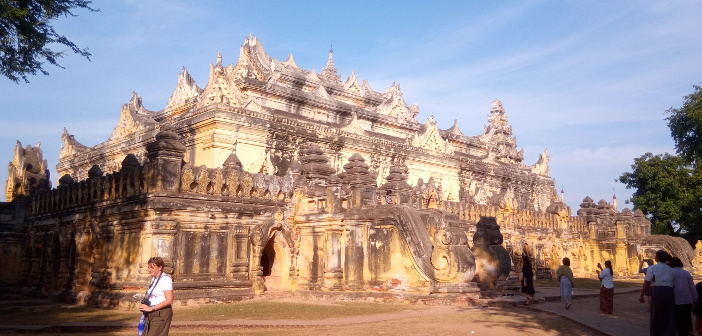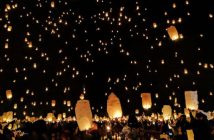Mandalay city has some attractive sights, despite the damage it endured in World War Two. However to see what makes it worth visiting, you need to cross the Irrawaddy River and start exploring the ancient capitals of Upper Burma.
There’s a well-established tourist trail, as can be seen from the fact that you will run into the same people at each location all day long. We were determined to visit Mingun, which cost extra and meant getting up before dawn. However, for only MMK 60,000 (about USD 40) our hotel arranged a driver and car for the whole day, and it was a small price to pay for an unforgettable experience.
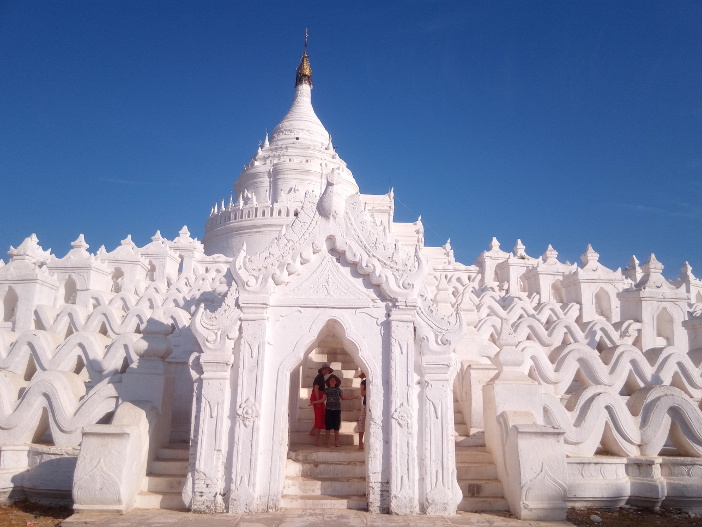
Hsinbyume Temple
A 45 minute drive took us to Mingun, and the breathtakingly beautiful Hsinbyume Temple. The temple was built in 1816 in memory of a princess who died in childbirth, and looks like clouds (or more prosaically, a giant meringue).
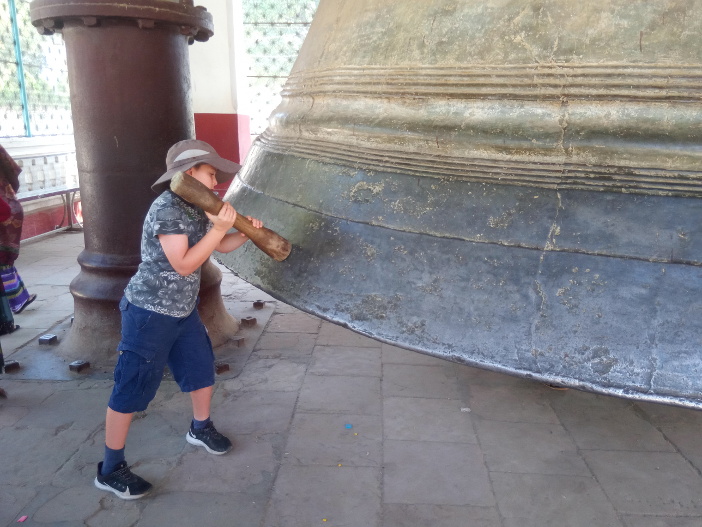
The Mingun Bell is the second largest ringing bell in the world
The brute size of Mingun’s other main attraction contrasts with the delicate elegance of Hsinbyume. There’s a foretaste of it along the way, in the form of the Mingun Bell. 900 tonnes of bronze, which until 2000 was the heaviest ringing bell in the world. You can climb inside it, and even ring it by whacking it with a lump of wood.
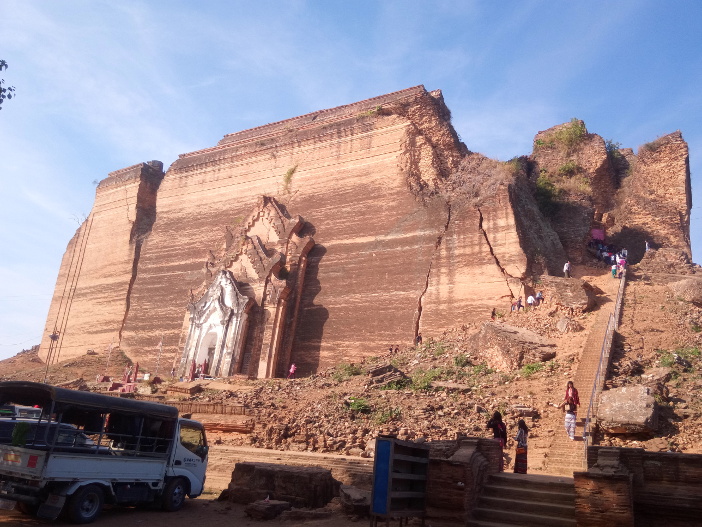
The unfinished, but still awe-inspiring, Mingun Temple
The bell was cast for Mingun Temple, which, had it been finished, would have been the world’s biggest stupa, soaring 150 meters into Myanmar’s deep blue skies. However an astrologer told the king that when it was completed he would die, so the building was abandoned. An earthquake in 1839 caused huge cracks, but a model nearby gives some sense of how gargantuan the finished stupa would have been. (The model dates to the same period as the original temple.)
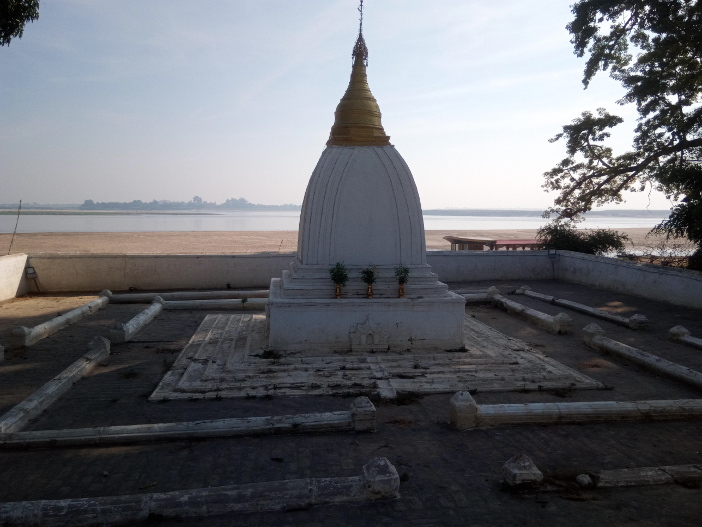
The model gives some idea of how enormous the Mingun Temple would have been if finished
From Mingun we were taken to Mahagandar Yone, one of the biggest and most important monasteries in the country. Buddhism is thriving in Burma, having been supported by the military government, even though monks were often in the forefront of protests against it. Every day tourists gather to see the monks lining up patiently for their only meal of the day. Food is provided by people from the local community, who take a pride in taking their turn to donate, and when we went the monks were also being given exercise books and pencils. (Buddhist traditions of education mean that Myanmar has always had a high level of literacy, even during periods of economic struggle.)
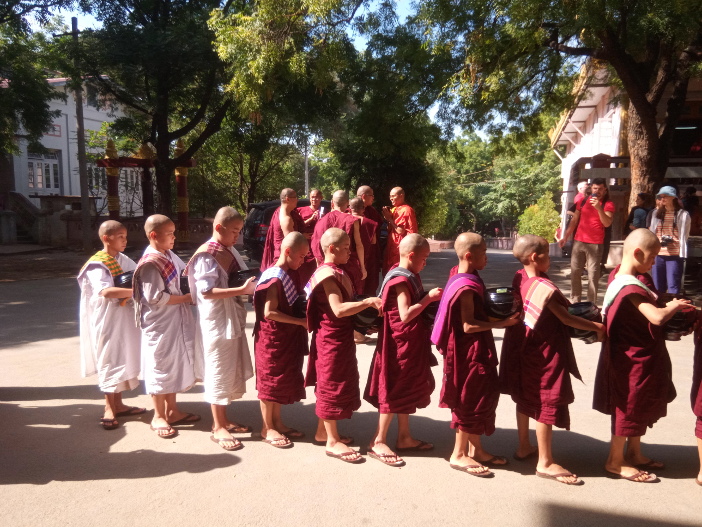
The monks line up in order of seniority with the youngest last, followed by the novices
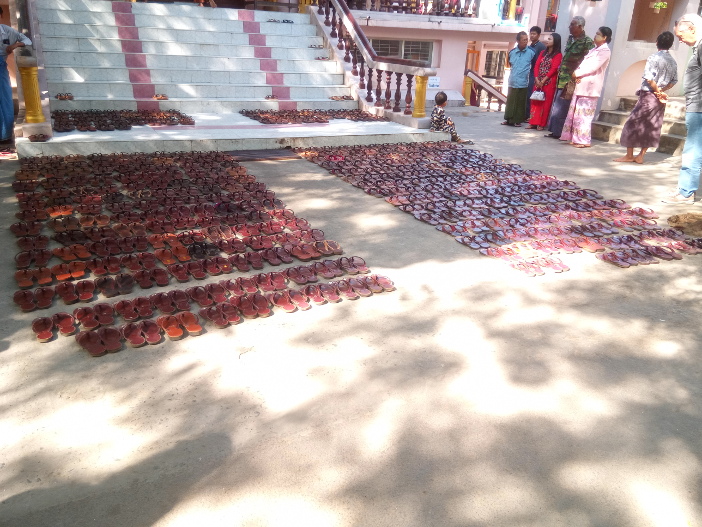
The monks leave their shoes in neat rows outside the dining hall
Next stop on the tour was Sagaing, capital of the kingdom for only three years in the 18th century, but from the 14th century seat of royal princes. The area is rich with stunning pagodas, including Umin Thonze with its curved “cave” containing seated Buddhas and paintings with moral lessons.
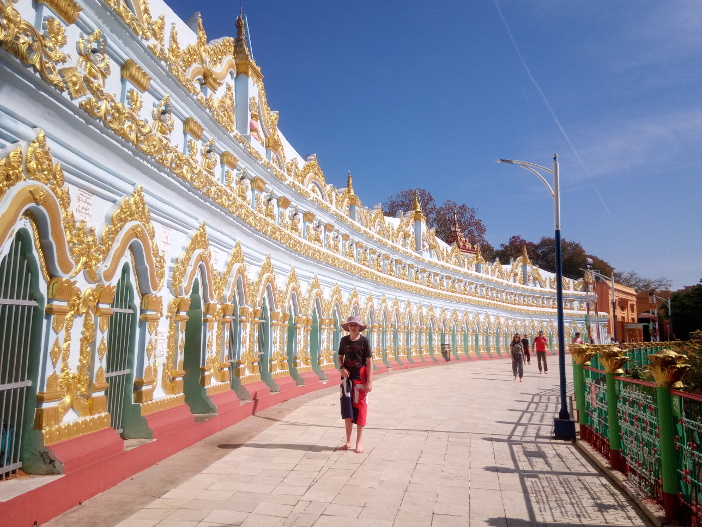
Umin Thonze
While the heir to the throne was at Sagaing, the kings of various Burmese kingdoms for most of the period between 1365 and 1839 ruled from their capital at Awa, now called Inwa. The city was destroyed by an earthquake, and is now in ruins, but the locals make the most of the sights that remain. Drivers bring everyone to a tributary of the river, where you have to take a boat across to Inwa. It’s not in fact an island, and it’s perfectly possible to drive there, but from the boat you are led to where horses and carts wait to take you round the old city. Hiring a cart is not obligatory, but the locals drive the carts very aggressively past the few tourists who choose to walk.
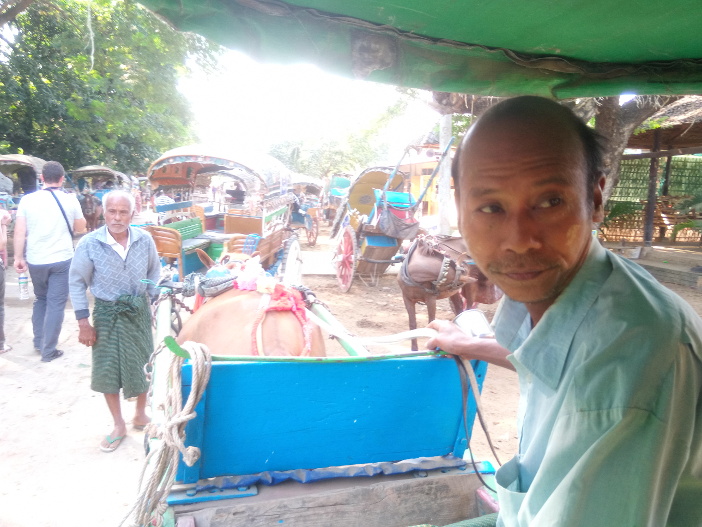
Horse carts await the tourists arriving at Inwa
It’s not a comfortable ride, bouncing over the dirt roads, and I was annoyed that we were not given any choice as to which sites we saw during the one-hour tour. I balked at paying to enter Bagaya Monastery, which is a modern reconstruction, only to find we had to buy the same ticket to see the unmissable Maha Aungmye Bonzan Monastery. But the kids loved the horses, and the ruins were dramatic and atmospheric.
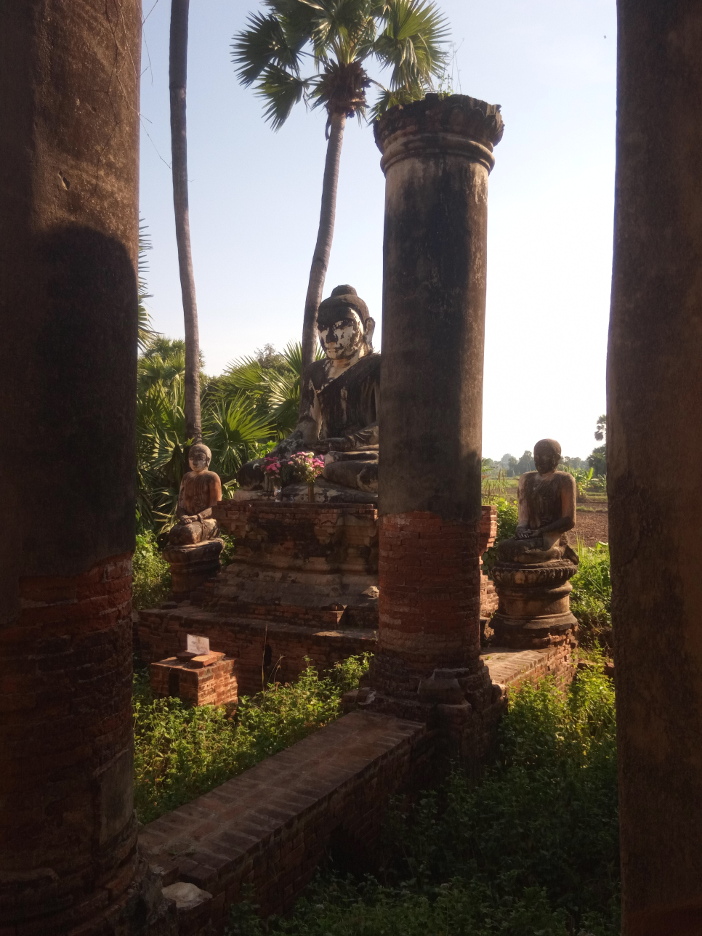
The ruined temple of Yadana Hsimi
The tour had one last stop: U Bein, said to be the longest wooden footbridge in the world. It’s an alarming place to walk, with no side rail and crowds of tourists stopping to take pictures without much regard for those around. We decided against walking its 1.2km length, and enjoyed the sunset from a lakeside restaurant, enjoying the cheap but fabulous seafood which is everywhere in Myanmar.
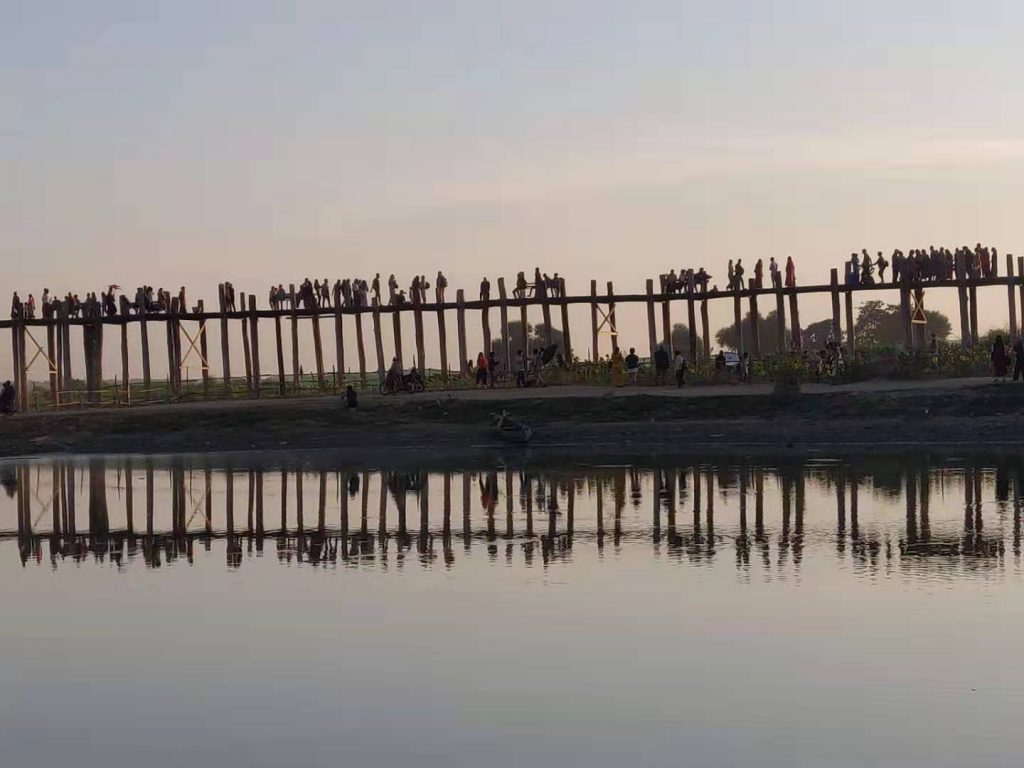
U Bein Bridge at sunset
With hindsight, we could have spent two whole days in Mandalay; we didn’t get to see, for example, the famously gold- and jewel-encrusted Mahamuni Buddha. But our next stop was calling, perhaps Myanmar’s most famous tourist draw: Bagan.
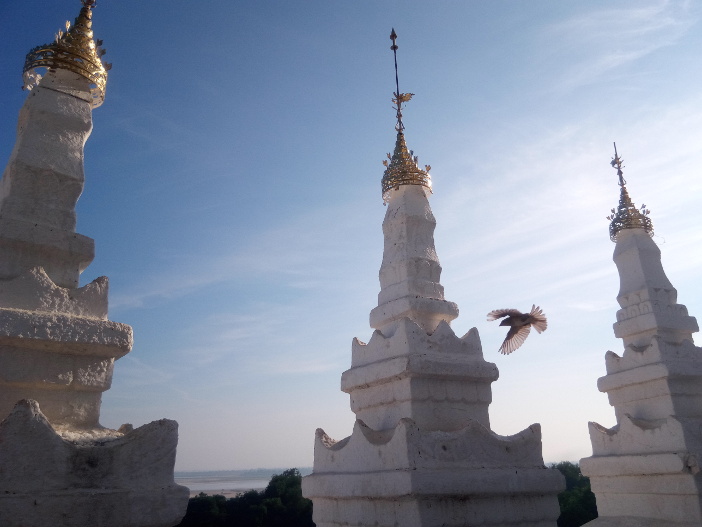
Birds fly around Hsinbyume Pagoda
Photos: Andrew Killeen, Karen Killeen

